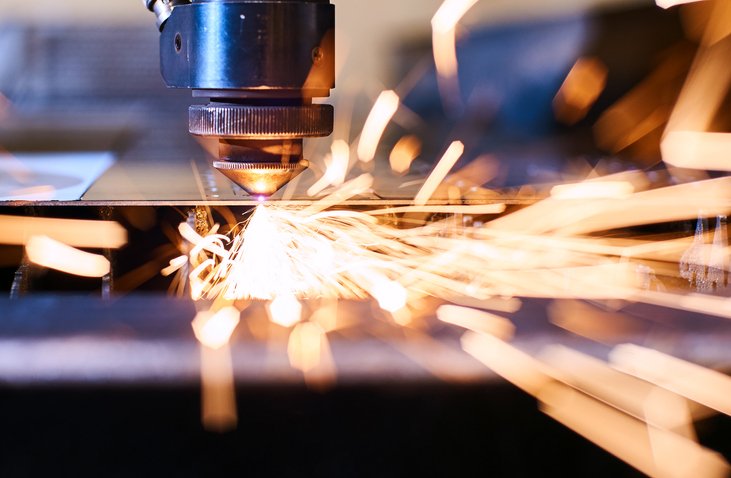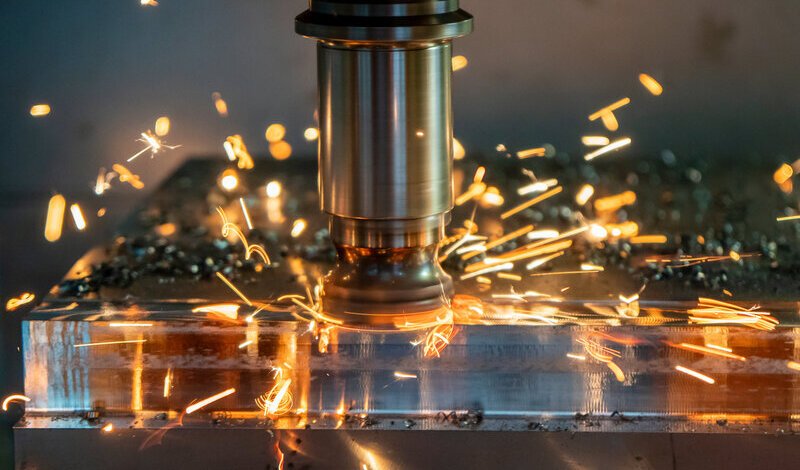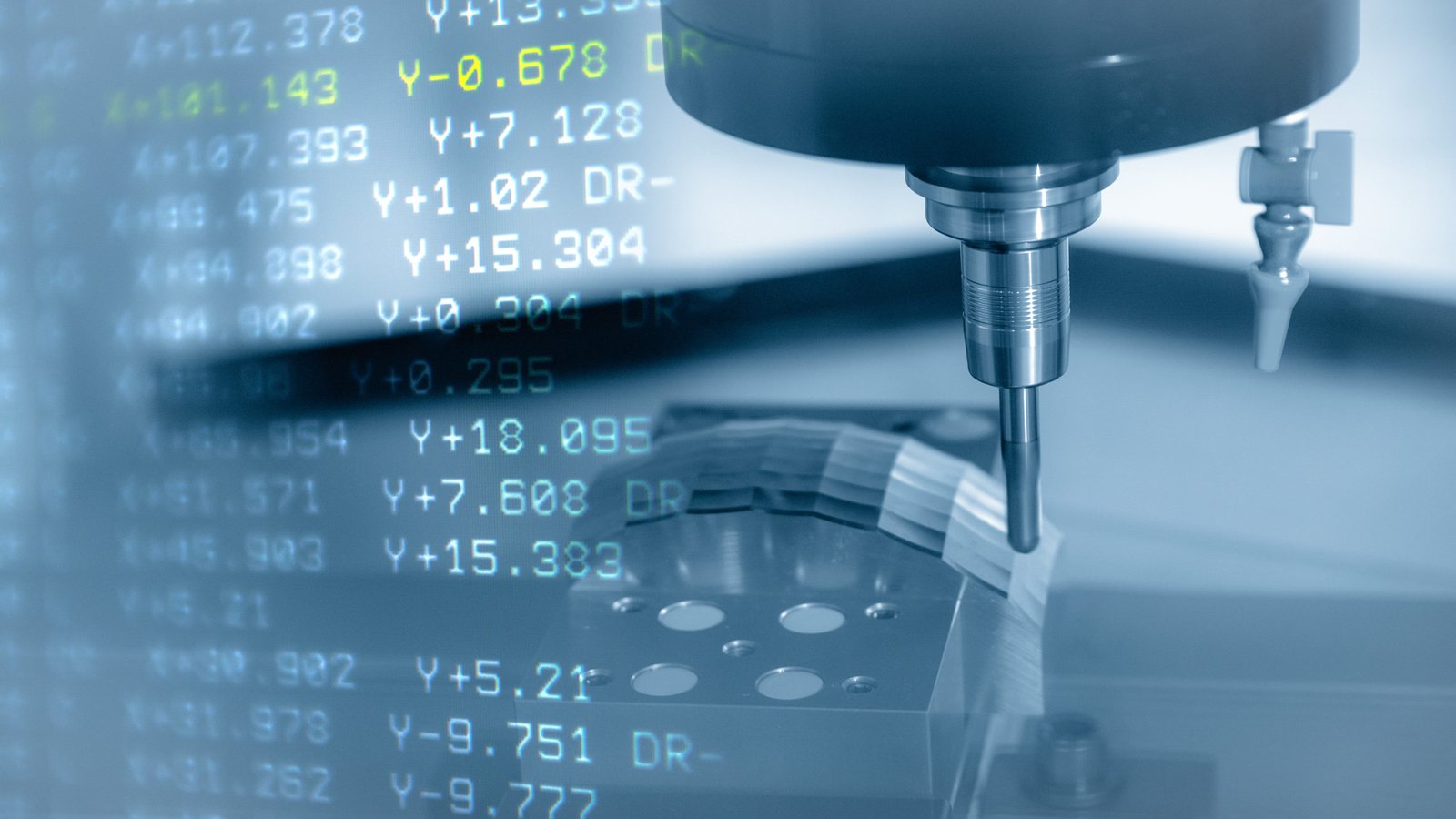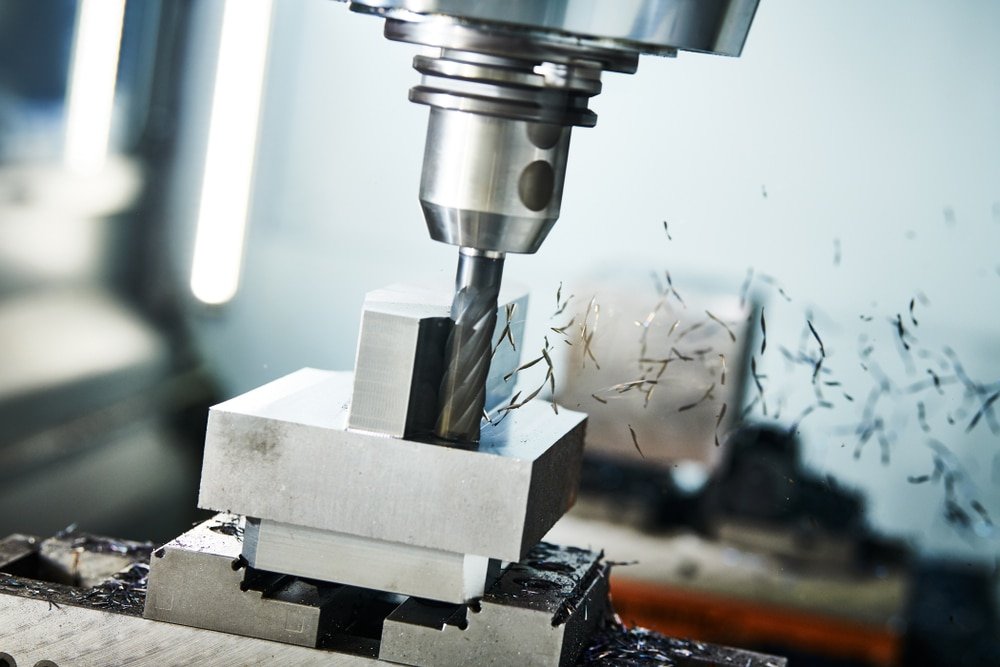CNC Machining is becoming increasingly popular worldwide due to its versatility and convenience. However, manufacturers still often encounter some issues in CNC Machining when operating it. Today, let’s explore those issues together with MaTec Vietnam and propose suitable solutions to solve them.
Workpiece Overcut
Causes
- Spring-loaded tool or improper tool strength, leading to tool deflection.
- Operator error during operation.
- Variations in cutting allowances (e.g., 0.5 on the curved surface and 0.15 on the bottom).
- Incorrect cutting parameters (e.g., overly large tolerance, excessive SF setting).
Solution
- Adhere to the rule of using larger tools rather than smaller ones and shorter tools rather than longer ones to minimize deflection.
- Implement a corner cleaning program and maintain uniform margins (both side and bottom margins should be consistent).
- Adjust cutting parameters appropriately and round corners with generous allowances.
- Utilize the machine’s SF function, allowing operators to fine-tune speeds for optimal cutting results.

Midpoint Problem
Cause
- Inaccurate manual operation by the operator.
- Presence of burrs around the mold.
- Magnetic properties of the centering rod.
- Lack of verticality on the sides of the mold.
Solution
- Conduct careful and repeated checks on manual operations to ensure that points are aligned accurately and at the same height whenever possible.
- Use an oil stone or file to deburr the edges of the mold. Clean the edges thoroughly with a rag and verify by hand.
- Prior to centering the mold, demagnetize the centering rods. Alternatively, consider using ceramic centering bars or other non-magnetic materials.
- Verify the verticality of all four sides of the mold. If significant errors are detected, review the plan with the fitter to address any deviations.
Tool Setting Problem
Cause
- Inaccuracy in manual tool setting by the operator.
- Incorrect setup of the tool.
- Incorrect blade on the flying knife (the flying knife may have inherent errors).
- Errors between the R knife, flat bottom knife, and flying knife.
Solution
- Conduct meticulous and repeated checks during manual tool setting to ensure consistency in positioning.
- Clean the tool thoroughly with an air gun or wipe it with a rag after clamping.
- Utilize a single blade for measuring the shank and smooth bottom surface when necessary for the blade on the flying knife.
- Implement a separate tool setting program to mitigate errors between the R tool, flat tool, and flying tool.

Collider – Programming
Cause
- Insufficient or incorrectly set safety height (resulting in the tool or chuck colliding with the workpiece during rapid traverse G00).
- Discrepancies between the tool specified on the program sheet and the actual tool programmed.
- Errors in tool length (edge length) and programmed machining depth on the program sheet.
- Discrepancies between programmed Z-axis depths and actual Z-axis positions on the program sheet.
- Incorrectly set coordinates during programming.
>>> Read more: What is CNC Programming? How Does CNC Programming Work?
Solution
- Ensure accurate measurement of the workpiece height to guarantee that the safety height is positioned above the workpiece.
- Maintain consistency between the tool listed on the program sheet and the actual tool programmed (consider utilizing automatic program listing or including images to output the program list).
- Measure the depth of machining on the workpiece and clearly document the tool length and blade length on the program sheet. Typically, the tool holder length should be 2-3mm higher than the workpiece, and the blade length should be 0.5-1.0mm.
- Record the actual Z-axis position on the workpiece and clearly document it on the program sheet. This step is particularly important for manual operations and should be verified repeatedly.
Issues in CNC Machining: Surface Accuracy
Cause
- Unreasonable cutting parameters resulting in a rough workpiece surface.
- Dull cutting edges.
- Excessive tool clamping length leading to blade overhang.
- Inadequate chip removal, air blowing, and oil flushing.
- Inefficient tool pass method in the program (consider prioritizing down milling).
- Presence of burrs on the workpiece.
Solution
- Ensure that cutting parameters such as tolerances, allowances, speeds, and feeds are set reasonably.
- Regularly inspect and replace tools to maintain sharpness.
- When clamping the tool, operators should aim to minimize overhang and keep the blade length appropriate.
- Set reasonable speeds and feeds for cutting with flat, R, and round nose tools.
- Address workpiece burrs by understanding the machine tool’s capabilities and compensating for burrs during cutting.
Clamping/Unclamping Problem of Chucks and Fixtures
Cause
- Incorrect positioning of the part leading to insecure clamping.
- Inadequate setup of the hydraulic pump and pressure.
- Incorrectly set jaws or inappropriate gripping methods.
- Malfunctioning foot switch or electrical connections.
- Inadequate lubrication or presence of dirt and debris affecting chuck movements.
- Failure of the chuck to respond to MDI M-code commands.
- Malfunctioning solenoid output or broken wires.
- Dysfunction of the draw tube connecting the hydraulic cylinder and the chuck.
Solution
- Ensure correct part positioning for secure clamping.
- Adjust hydraulic pump settings and pressure as needed.
- Properly set jaws and utilize wider surface gripping.
- Test and repair or replace malfunctioning foot switches and electrical connections.
- Lubricate and clean the chuck components regularly to prevent movement issues.
- Troubleshoot and rectify any errors in MDI M-code commands for chuck operation.
- Repair or replace faulty solenoids and inspect wiring for damage.
- Verify functionality of the draw tube and tighten if necessary to ensure proper operation.
Overheating of Machine Tool
Cause
- Extensive usage at high rpm, particularly with spindles using Greased Lubrication.
- Accumulation of dirt, soil, and machining material in the machine’s channels and components.
- Variations in environmental temperature within the workshop, including air drafts from doors or windows.
- Exposure to direct sunlight and cold air blowing from air conditioning units, causing thermal distortion.
Solution
- Regularly clean all channels and components of the machine to remove dirt, soil, and machining material buildup.
- Implement a scheduled cleaning regimen to clear metal shavings and cutting fluids from the machine.
- Consider using spindles with Air-Oil Lubrication or Oil-Jet Lubrication for better heat dissipation during extensive usage at high rpm.
- Monitor and control environmental factors such as temperature variations and air drafts within the workshop to minimize the risk of overheating.
- Install sunshades or curtains to prevent direct sunlight from heating the machine and affecting its performance.
- Optimize the workshop’s ventilation system to maintain a stable and conducive temperature for precision machining operations.

Power Supply Problems
Cause
- Incorrect power or voltage input to the CNC machine tool.
- Malfunctioning output or secondary side of the power supply.
Solution
- Ensure correct power and voltage input for the CNC machine tool.
- Verify proper functioning of the output or secondary side of the power supply.
- If there is no power or low voltage reading, consider disconnecting the output wires with the power off and then power up and recheck the output side.
- Inspect the LED indicators on the machine to determine if they are functioning properly.
- Check the fuses to see if they have blown, indicating a potential issue with the power supply.
- It’s crucial to have a stable power supply to ensure trouble-free operations with the CNC machine tool.
Recommendation
You should find assistance from a specialist to perform the necessary checks on the power supply system.
Conclusion
Overall, MaTec Vietnam has listed 7 issues in CNC Machining that manufacturers often encounter during production and provided the most suitable solutions. MaTec Vietnam hopes that our contributions will help you gain more knowledge to tackle these issues in CNC Machining together.
If you are looking for a reliable and responsible CNC Machining solution provider, please contact us to receive a quotation and explore our latest products here


